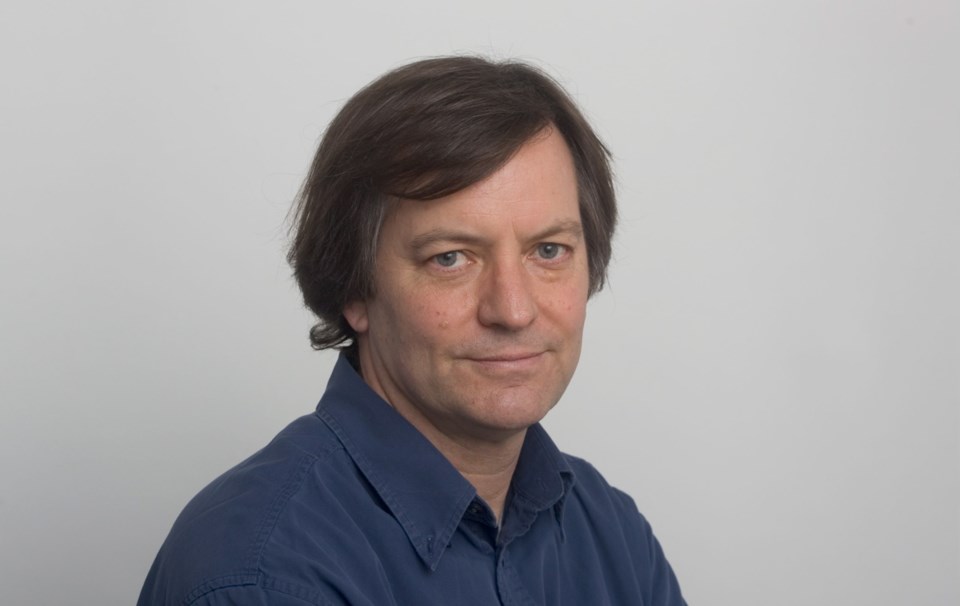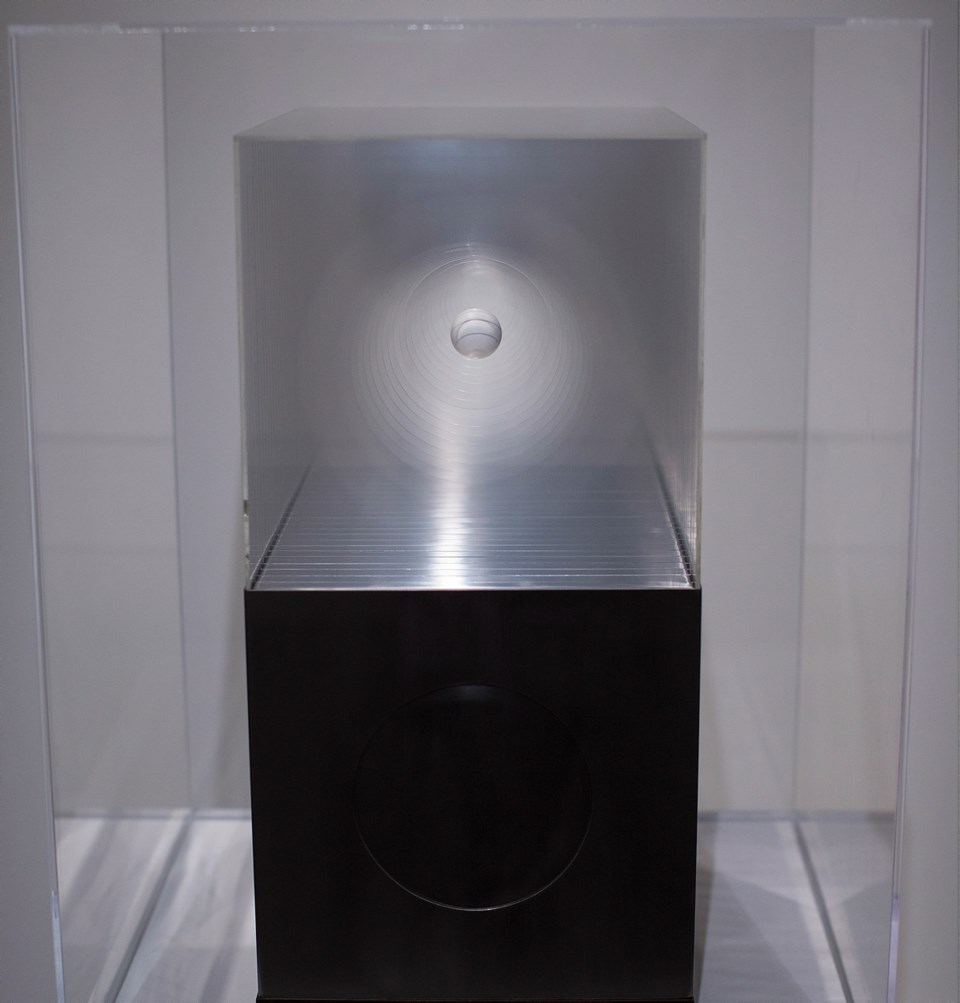Beyond the Edges: Art & Geometry, at the Art Gallery of Greater Victoria (1040 Moss St., 250-384-4171) until April 1.
 When I graduated from university in 1973, the art world had just crossed a great divide: The end of modernism and the birth of post-modernism. Just about the last chapter of modernism was geometric abstraction, currently the subject of a survey of the collections of the Art Gallery of Greater Victoria.
When I graduated from university in 1973, the art world had just crossed a great divide: The end of modernism and the birth of post-modernism. Just about the last chapter of modernism was geometric abstraction, currently the subject of a survey of the collections of the Art Gallery of Greater Victoria.
The show begins with two views of Myfanwy Pavelic’s studio, which are basically her fully representational paintings that have been cut into facets, the hard edges suggested by the views in mirrors placed around the artist.
Another representational artist, Lawren Harris, had left behind the landscape in 1933, with the end of the Group of Seven, and after that he painted only abstracts. His study of theosophy provided the theme of this art, and the motifs he drew from mountain ranges and icebergs were translated into simple, hard-edged forms. These were the sole subject until his death in 1970, at which time the gallery was given four related drawings by his estate.
Those artists were only partially breaking away from representation subjects. sa���ʴ�ý Binning, a Vancouver artist associated with the faculty of architecture at the University of British Columbia, put aside his whimsical drawings of nautical subjects and replayed them in radically simplified geometric forms. The reductivism of Le Corbusier informs his designs, and perhaps his familiarity with architectural models and forms led him to build something like a portable Christian shrine or altar.
Maxwell Bates was an architect as well as a painter. Best known for his expressionist paintings of buildings and people, he tried rendering his ideas in the new geometric language in 1961, painting The Battle of the Poets and the Mechanics. This tightly woven field of rhomboids is geometric but, from a distance, seems to show in a schematic way the two opponents. Bates did not pursue this manner.
Through the 1960s, the younger generation left all traces of representation behind. The romantic artist with his gestural “action painting” was passé. Now colour and line on a two-dimensional surface were the only accepted means of expression. In Quebec, Rita Letendre laid out sharp, coloured wedges like a jet aircraft’s trail, and Jacques Hurtubise set up colour oppositions that were the subject in themselves.
The West Coast also moved with the times. Abstract painters Gordon Smith and Takeo Tanabe shifted from gesture to hard edge. The most striking paintings of this period are by Roy Kiyooka, whose sense of colour, scale and concept work powerfully on the eye. Hard-edged patterns generated optical effects, none better than the pinstriped Op Art pattern in black on white by Brian Fisher.
Hard-edged images were perfectly suited for reproduction by screen printing, a commercial process popularly used to print real estate signs. And thus was born Pop Art. Now conscious of the media of the world, artists played back billboard styles to their fine-art audience, sprinkling their work with ironic self-regard.
Michael Morris took his rigorous striped paintings and offered them with humour, as in his Proposed Backdrop for the North Shore Mountains. Linda Stanbridge’s hard-edged, impossible triangle is made of fired ceramic, rich with organic texture. In 1980, Peter Schuyff painted Folded Man, a figure flattened and bent, which might be a wry comment on the always-serious folded metal sculptures made by Robert Murray, which in the 1970s were seen outside almost every airport and government building.
An anomaly stands out. Joseph Kyle, founding father of the Victoria College of Art, didn’t achieve a career as a painter, but in the 1980s created many hard-edged colour-field abstractions, inspired by Josef Albers and an engagement with philosophy. They appeared dated at the time, but now can be seen as excellent examples of this art style and offer much pleasure for the eye and mind.
Among the sculptures brought up from the basement for this show is an arresting Untitled Construction by Jack Kidder of Victoria. Kidder was fascinated by the potential of a new material — acrylic — and I spoke about him with Chris Bitten, who worked in Kidder’s studio.
“I watched it being put together,” Bitten volunteered. “It’s a kind of a riff on time and space.”
For gallery display, the sculpture is mounted within a Plexiglas museum case. The sculpture itself is a Plexiglas case, with many sheets of Plexiglas within in it. We see a cone of diminishing transparent rings in the centre of a transparent cube. Floating within that tunnel, as if caught in time and space, is a solid sphere that appears to be hovering.
Plexiglas was then new, a material that could be cut and formed, but unlike bronze or marble, it was transparent. A sculpture that is transparent seems to dematerialize. And at the centre of this emptiness hovers a solid sphere, which appears to defy gravity.
Spoiler alert. Bitten revealed to me that the sphere is embedded in one of the pieces, not just hovering there. “That one was fiendishly difficult to put together in the not-very-clean studio at 1032 McGregor,” he remembered.
“Do you know how difficult it was to get all those panels to line up?” Bitten went on. “It nearly drove Jack crazy.” The worst of it might have been the static electricity and little bits of fluff.
“O my God — that studio was nothing but fluff,” he sighed. “Incredibly dusty and dirty.” After working in Kidder’s studio for two years, Bitten went on to serve as chief preparator at the Art Gallery of Greater Victoria for a number of years.



